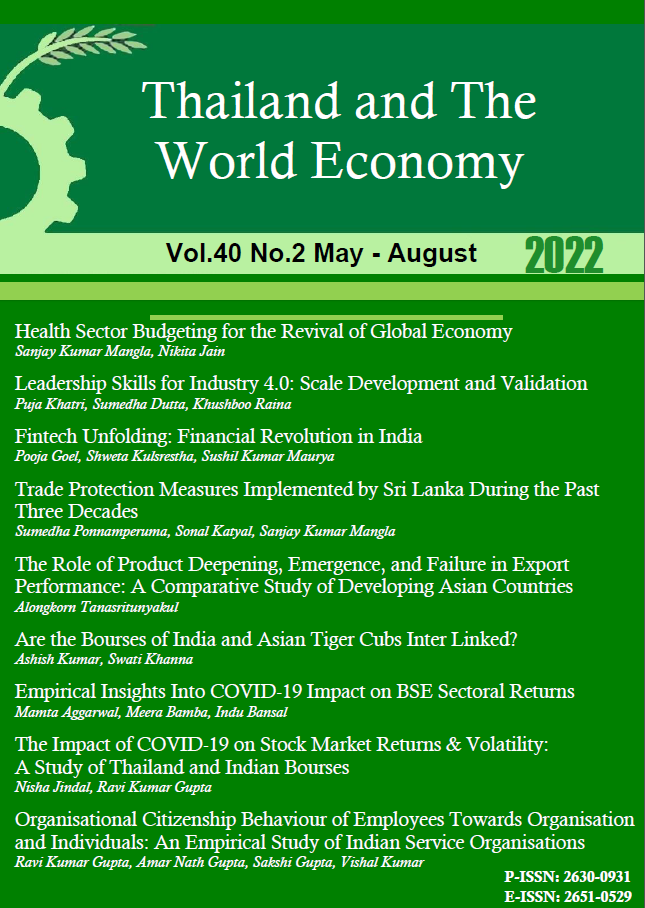Trade Protection Measures Implemented by Sri Lanka During the Past Three Decades
Keywords:
Trade policy, Tariff measures, Para-tariff, Sri LankaAbstract
This paper tries to identify the trade protection measures implemented by Sri Lanka from independence to date. Special emphasis is given to the period from 1995 to 2019, since the WTO was created on 1 January 1995 , and member countries started to operate according to binding rules and regulations implemented by the WTO since then. Sri Lanka has taken many actions to liberalize trade since 1977, and the same has accelerated since 1995 due to binding commitments undertaken by the country. According to the trade statistics, it has been noticed that Sri Lanka’s exports, imports, and trade gap have increased. The trade gap widened after 1995. It shows that trade protection measures have not had any impact on controlling overall imports into the country.
References
Athukorala, P. C. (2012). Sri Lanka’s trade policy: Reverting to dirigisme?. The World Economy, 35(12), 1662-1686.
Central Bank of Sri Lanka. (1950-2020). Central Bank of Sri Lanka Annual Report. Central Bank of Sri Lanka.
Ekanayake, E.M., 1996. The impacts of trade policy reforms on the Sri Lankan economy (Doctoral dissertation, Florida International University).
Helleiner, G. K., & Helleiner, G. (Eds.). (1994). Trade policy and industrialization in turbulent times. Place of publication:Psychology Press.
Kaminski, B., & Ng, F. (2013). Increase in protectionism and its impact on Sri Lanka's performance in global markets. The World Bank.
Kappagoda, Niuhal, M. (1967). Foreign Exchange Budgeting – Ceylon’s Experience. “Monthly Bulletin of the Central Bank of Ceylon. September.
Naranpanawa, R. M. A. K. B. (2005). Trade liberalization and poverty in a computable general equilibrium (CGE) model: The Sri Lankan case. (Unpublished PhD Thesis). Griffith Business School, Griffith University, Australia.
Navaratne, N. M. C. (1991). Who bears the incidence of import protection? Evidence from Sri Lanka. World development, 19(10), 1409-1419.
Peebles, P. (2006). The History of Sri Lanka. Westport, USA:Greenwood Publishing Group.
Pursell, G., & Ahsan, F. Z. (2011). Sri Lanka’s trade policies: Back to protectionism. Australia South Asia Research Centre Working Paper No. 2011/03.
Rafeek, M. I. M., & Samaratunga, P. A. (2000). Trade liberalisation and its impact on the rice sector of Sri Lanka. Sri Lankan Journal of Agricultural Economics, 3(1381-2016-115735), 143-154.
Tennakoon, K. U. A. (2004). General equilibrium analysis of Sri Lanka's trade liberalization policy options (Doctoral dissertation). The University of Auckland, New Zealand .
Rafeek, M.I.M. and Samaratunga, P.A., 2000. Trade liberalisation and its impact on the rice sector of Sri Lanka. Sri Lankan Journal of Agricultural Economics, 3(1381-2016-115735), pp.143-154.
World Trade Organization. (1995). Trade Policy Review: Sri Lanka (Vol. 67). Geneva: WTO.
World Trade Organization. (2004). Trade Policy Review: Sri Lanka. Geneva: WTO.
World Trade Organization. (2010). Trade Policy Review: Sri Lanka. Geneva: WTO.
World Trade Organization. (2016). Trade Policy Review: Sri Lanka. Geneva: WTO.
Downloads
Published
How to Cite
Issue
Section
License

This work is licensed under a Creative Commons Attribution-NonCommercial-NoDerivatives 4.0 International License.










